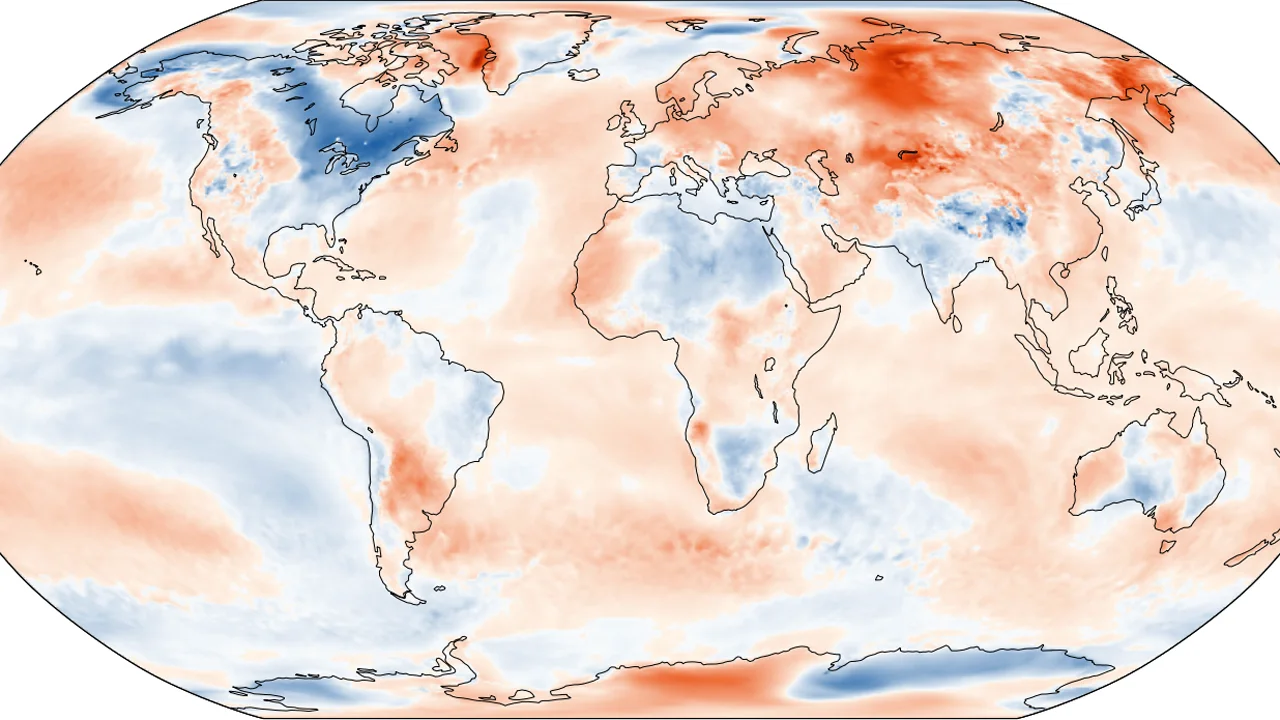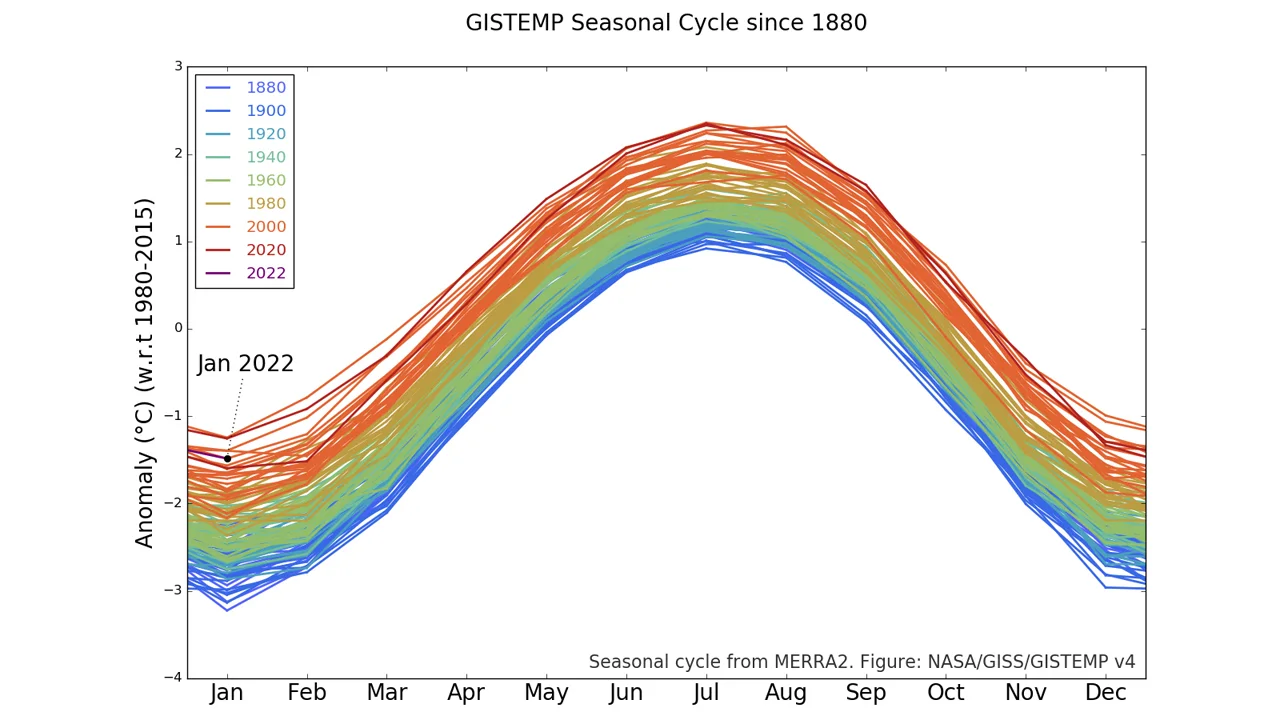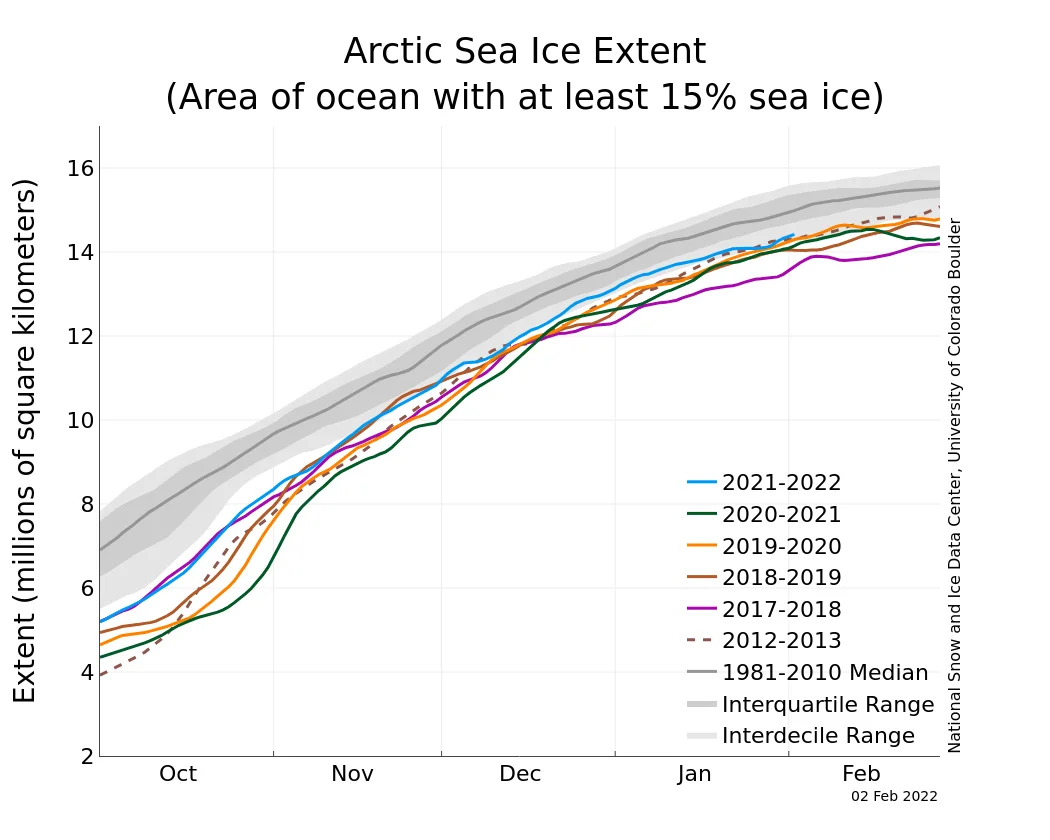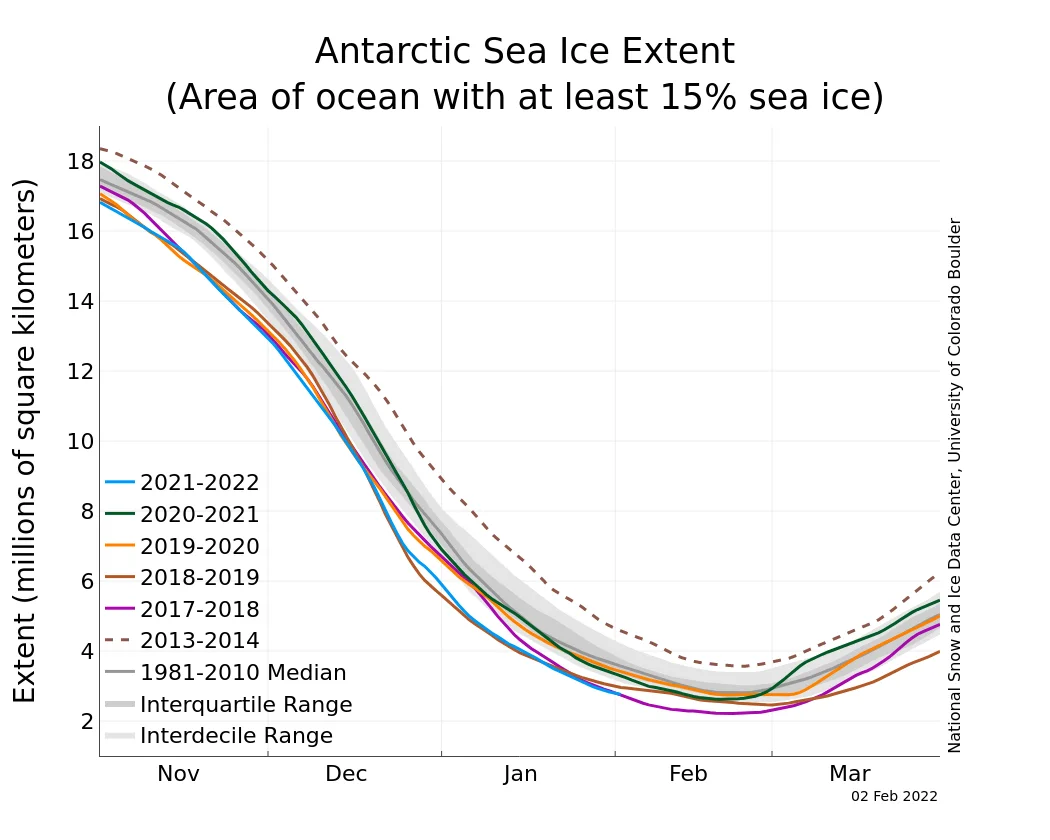
In January, Canada was (relatively) one of the coldest places on Earth
The chilly January many Canadians endured was an anomaly compared to the rest of the world.
Much of the world endured the equivalent of a low-grade fever in January. However, parts of Canada were suffering chills, with Manitoba, Ontario, and Quebec seeing some of the coldest relative temperatures on the globe.
NOAA, NASA, the Japanese Meteorological Agency (JMA), and Europe's Copernicus Climate Change Service have all tallied up global temperatures for the first month of 2022. January came in as the sixth warmest month of January, based on NOAA, JMA, and Copernicus records. Meanwhile, NASA logged it as tied with January 2019 for 5th warmest since 1880.

This seasonal cycle graph plots each monthly global temperature anomaly relative to the average monthly anomaly from 1980-2015. This provides a seasonal context for each monthly temperature of the year. Credit: NASA GISS
According to NOAA's Global Climate Report, temperatures were 0.89°C above the 20th century average for the month. Regions of central South America saw record heat in January, while parts of Russia and Siberia were up to 5°C warmer than normal.
At the other end of the scale, a swath of Canada stretching from northern Manitoba through Ontario to southern Quebec was at least 5°C colder than normal. Even so, the bitter cold did not break any climate records for the month (NOAA logged them only as "cooler than average").

Credit: NOAA NCEI
SOME GOOD NEWS
In their latest update, the National Snow and Ice Data Center (NSIDC) reported that the average Arctic Sea Ice extent at the end of January was actually higher than for any other month of January going back to 2009.

Arctic sea ice extent for winter 2021-2022 tracks above the past decade. Credit: NSIDC
However, the average extent for the month was still half a million square kilometres below the 30 year average (from 1981-2010).
"This illustrates the large natural variability in sea ice conditions," the agency noted. "However, winter ice extent is a poor indicator of what the ice extent will look like this coming September."
Watch below: Why one of the fastest ocean currents on Earth is speeding up
SOME BAD NEWS
At the other end of the planet, Antarctic sea ice extent — as it nears the peak of the southern summer melt period — was tied with the second lowest level in the satellite record from 2018.

2021-2022 Antarctic sea ice extent compared with the four past melt seasons, as well as the 2013-2014 maximum. Credit: NSIDC
Currently, Antarctic sea ice extent is tracking at record low levels, lower than even the 2016-2017 summer minimum.
Thumbnail courtesy Copernicus Climate Change Service











